


The Peabody Museum has long published a variety of print and electronic publications relating to collections, projects, and excavations conducted by Peabody Museum staff and Department of Anthropology faculty.
Current publications can be found under Books with links to purchase, while pre-1970s publications include links to texts when available.
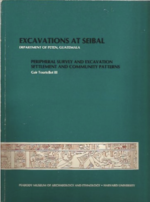
Peripheral Survey and Excavation, Settlement and Community Patterns
Seibal is a major ruin of the southern Maya lowlands, its vast ceremonial center covering several high hills on the banks of the Pasion River in the Guatemalan Department of Peten. In five volumes published over a 15-year period, the archaeological team headed by Gordon R. Willey presents a comprehensive review of their fieldwork from 1964 to 1968 and the results of many years of subsequent data analysis. The volumes also report on explorations in the peripheral settlements outside of the Seibal center and provide a regional view of the evolution of lowland Maya culture from the Middle and Late Preclassic through the Late Classic periods.
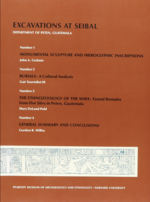
Volume 1. Monumental Sculpture and Hieroglyphic Inscriptions
Volume 2. Burials
Volume 3. The Ethnozoology of the Maya
Volume 4. General Summary and Conclusions
Seibal is a major ruin of the southern Maya lowlands, its vast ceremonial center covering several high hills on the banks of the Pasion River in the Guatemalan Department of Peten. In five volumes published over a 15-year period, the archaeological team headed by Gordon R. Willey presents a comprehensive review of their fieldwork from 1964 to 1968 and the results of many years of subsequent data analysis. The volumes also report on explorations in the peripheral settlements outside of the Seibal center and provide a regional view of the evolution of lowland Maya culture from the Middle and Late Preclassic through the Late Classic periods.
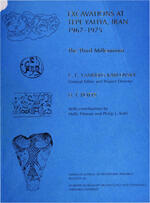
Situated roughly midway between the great cities of the Indus Valley and those of the Mesopotamian plains, Tepe Yahya occupies a special place in our conceptions of relations between these distant territories during the early Bronze Age. Its third-millennium levels, dating from 3000 to 2100 B.C., are particularly important.
In this definitive study, D. T. Potts describes the stratigraphy, architecture, ceramics, and chronology of the site and presents a full inventory of the small finds. Holly Pittman contributes comprehensive illustrations and a discussion of the seals and sealings, and Philip Kohl provides an analysis of the carved chlorite industry. In a foreword and afterword, project director C. C. Lamberg-Karlovsky tells the story of the archaeological expedition and reflects on the contributions of the Tepe Yahya project.
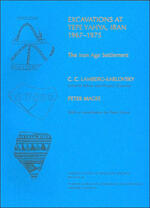
Tepe Yahya provides a stratigraphic sequence that stretches some 6,000 years, from the Neolithic period to the early centuries AD. As a result, the site is critical for understanding cultural processes in southeastern Iran. In this fifth volume of results of the excavations at Tepe Yahya, Peter Magee presents evidence from the Iron Age occupation of the site. Looking beyond the epigraphic and historical data and examining the insights provided by the artifactual record, Magee describes how a small settlement, located some distance from the main centers of power, came into being and was affected by the emergence of the Achaemenid imperial system, which stretched from Pakistan to Libya.
This milestone volume describes and interprets excavations at one of the greatest late prehistoric sites in the southeastern United States. Lake George reached its zenith between the thirteenth and fifteenth centuries A.D., during the florescence of the Mississippian culture. This is a detailed analysis of the site and its relationship to the corpus of Southeastern archaeology.
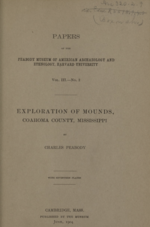
Peabody Museum Papers Volume 3, no. 2
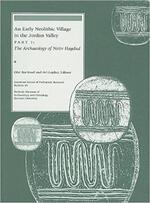
The "Neolithic Revolution" in Southwestern Asia involved major transformations of economy and society that began during the Natufian period in the southern Levant and continued through Pre-Pottery Neolithic A (PPNA) and into Pre-Pottery Neolithic B (PPNB). The authors describe that process at Netiv Hagdud, with additional material from the Natufian site of Salibiya IX. Includes reports on the archaeology, lithics, bone tools, lithic use-wear, marine shells, burials, and plant remains.
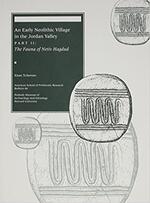
The “Neolithic Revolution” in Southwestern Asia involved major transformations of economy and society that began during the Natufian period in the southern Levant and continued through Pre-Pottery Neolithic A (PPNA) and into Pre-Pottery Neolithic B (PPNB). The authors describe that process at Netiv Hagdud, with additional material from the Natufian site of Salibiya IX. Includes reports on the archaeology, lithics, bone tools, lithic use-wear, marine shells, burials, and plant remains.

Situated roughly midway between the great cities of the Indus Valley and those of the Mesopotamian plains, Tepe Yahya occupies a special place in our conceptions of relations between these distant territories during the early Bronze Age. Its third-millennium levels, dating from 3000 to 2100 B.C., are particularly important.
In this definitive study, D. T. Potts describes the stratigraphy, architecture, ceramics, and chronology of the site and presents a full inventory of the small finds. Holly Pittman contributes comprehensive illustrations and a discussion of the seals and sealings, and Philip Kohl provides an analysis of the carved chlorite industry. In a foreword and afterword, project director C. C. Lamberg-Karlovsky tells the story of the archaeological expedition and reflects on the contributions of the Tepe Yahya project.

Tepe Yahya provides a stratigraphic sequence that stretches some 6,000 years, from the Neolithic period to the early centuries AD. As a result, the site is critical for understanding cultural processes in southeastern Iran. In this fifth volume of results of the excavations at Tepe Yahya, Peter Magee presents evidence from the Iron Age occupation of the site. Looking beyond the epigraphic and historical data and examining the insights provided by the artifactual record, Magee describes how a small settlement, located some distance from the main centers of power, came into being and was affected by the emergence of the Achaemenid imperial system, which stretched from Pakistan to Libya.
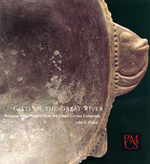
Foreword by Ian W. Brown
In 1879 Edwin Curtiss set out for the wild St. Francis River region of northeastern Arkansas to collect archaeological specimens for the Peabody Museum. By the time Curtiss completed his fifty-six days of Arkansas fieldwork, he had sent nearly 1,000 pottery vessels to Cambridge and had put the Peabody on the map as the repository of one of the world’s finest collections of Mississippian artifacts. John House brings us a lively account of the work of this nineteenth-century fieldworker, the Native culture he explored, and the rich legacies left by both. The result is a vivid re-creation of the world of Indian peoples in the Mississippi River lowlands in the last centuries before European contact. The volume’s focus is Curtiss’s collection of charming and expressive effigy vessels: earthenware bowls and bottles that incorporate forms of fish, birds, mammals, amphibians, and humans, including the Peabody’s famous red-and-white head vase.
John H. House is Station Archaeologist, Pine Bluff Research Station, and Associate Professor of Anthropology, University of Arkansas, Fayetteville.
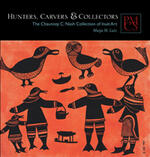
Author Maija M. Lutz draws from ethnology, archaeology, art history, and cultural studies to tell the story of a little-known collection that represents one of the most vibrant and experimental periods in the development of contemporary Inuit art. Lavishly illustrated, Hunters, Carvers, and Collectors presents numerous never-before-published gems, including carvings by the artists John Kavik, Johnniebo Ashevak, and Peter Qumalu POV Assappa. This latest contribution to the award-winning Peabody Museum Collections Series fills an important gap in the literature of Native American art.
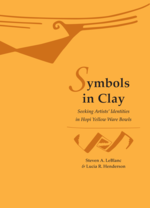
Foreword by Rubie Watson
Photographs by Hillel S. Burger
1st place, 2006 NEMA Awards (Books Over $10)
Highlighting one of the Peabody Museum’s most important archaeological expeditions—the excavation of the Swarts Ranch Ruin in southwestern New Mexico by Harriet and Burton Cosgrove in the mid-1920s—Steven LeBlanc’s book features rare, never-before-published examples of Mimbres painted pottery, considered by many scholars to be the most unique of all the ancient art traditions of North America. Made between A.D. 1000 and 1150, these pottery bowls and jars depict birds, fish, insects, and mammals that the Mimbres encountered in their daily lives, portray mythical beings, and show humans participating in both ritual and everyday activities. LeBlanc traces the origins of the Mimbres people and what became of them, and he explores our present understanding of what the images mean and what scholars have learned about the Mimbres people in the 75 years since the Cosgroves’ expedition.
Steven A. LeBlanc is an archaeologist and former Director of Collections at the Peabody Museum of Archaeology and Ethnology, Harvard University.
Rubie Watson is Curator of Comparative Ethnology in the Peabody Museum of Archaeology and Ethnology, Harvard University.
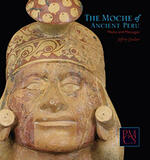
Peru’s ancient Moche culture is represented in a magnificent collection of artifacts at Harvard’s Peabody Museum. In this richly illustrated volume, Jeffrey Quilter presents a fascinating introduction to this intriguing culture and explores current thinking about Moche politics, history, society, and religion.
Quilter utilizes the Peabody’s collection as a means to investigate how the Moche used various media, particularly ceramics, to convey messages about their lives and beliefs. His presentation provides a critical examination and rethinking of many of the commonly held interpretations of Moche artifacts and their imagery, raising important issues of art production and its role in ancient and modern societies.
The most up-to-date monograph available on the Moche—and the first extensive discussion of the Peabody Museum’s collection of Moche ceramics—this volume provides an introduction for the general reader and contributes to ongoing scholarly discussions. Quilter’s fresh reading of Moche visual imagery raises new questions about the art and culture of ancient Peru.

Manifest | Thirteen Colonies is a photographic project and journey through the repositories of African American material culture found in libraries, museums, and archives of the original thirteen English colonies and Washington, DC. Conceived by photographer Wendel A. White, this project is a personal reliquary of the remarkable evidence of Black agency and racial oppression stored in public collections. Accompanying his imagery, White discusses his approach to finding, selecting, and photographing artifacts—from rare singular objects to more quotidian materials—and highlights their significance as forensic evidence of Black life and history in the United States.
Manifest: Thirteen Colonies will be open to the public at the Peabody Museum of Archaeology & Ethnology, Harvard University from May 18, 2024-April 13, 2025.
Wendel A. White (b. 1956, Newark, NJ) is currently Distinguished Professor of Art at Stockton University and has taught photography at the School of Visual Arts; The Cooper Union for the Advancement of Science and Art; the International Center of Photography; and the Rochester Institute of Technology. His work has received various awards and fellowships, including: Doctor of Arts (hc), Oakland University; Robert Gardner Fellow in Photography, Peabody Museum of Archaeology & Ethnology, Harvard University; John Simon Guggenheim Memorial Foundation Fellowship in Photography; Bunn Lectureship in Photography, Bradley University; three artist fellowships from the New Jersey State Council for the Arts; Graham Foundation for Advanced Studies in the Fine Arts; and New Works Photography Fellowship from En Foco Inc. His work is represented in museum and corporate collections, including the National Gallery of Art, Washington, DC; Mint Museum, Charlotte, NC; Museum of Fine Arts, Houston, TX; and Museum of Contemporary Photography, Chicago, IL; among many others.

Preface by Robert Gardner
Essay by Charles Ramble
Third Place, 2015 New England Book Show (Cover)
Photographer Kevin Bubriski has been visually documenting the country and people of Nepal since his first visit in 1975. Sent as a young Peace Corps volunteer to the northwest Karnali Zone, the country’s remotest and most economically depressed region, he spent three years walking the length and breadth of the Karnali, planning and overseeing construction of gravity flow drinking water pipelines. He also photographed the local villagers, producing an extraordinary series of 35mm and large format black-and-white images. For nearly four decades, Bubriski has maintained his close association with Nepal and its people. Both visual anthropology and cultural history, this remarkable body of photographic work documents Nepal’s evolution from a traditional Himalayan kingdom to a rapidly changing, globalized society. Nepal: 1975–2011 also offers an incisive and comprehensive look at the aesthetic evolution of an important contemporary photographer.
Kevin Bubriski is Assistant Professor of Photography at Green Mountain College in Poultney, Vermont, and was the 2010 recipient of the Robert Gardner Visiting Artist Fellowship at the Peabody Museum of Archaeology and Ethnology at Harvard University.
Co-published with Radius Books.

Winner, 2009 New England Book Show (General Trade, Illustrated)
Silver Medal, 2010 IPPY Awards (Multicultural Non-Fiction Adult)
Silver Medal, 2010 IPPY Awards (Religion & Multi-Cultural)
Bronze Medal, 2009 Foreword Magazine Awards (Religion)
With essays by Ali S. Asani, Carl W. Ernst, and Kamil Khan Mumtaz
Sufism, the mystical path of Islam, is a key feature of the complex Islamic culture of South Asia today. Influenced by philosophies and traditions from other Muslim lands and by pre-Islamic rites and practices, Sufism offers a corrective to the image of Islam as monolithic and uniform.
In Sacred Spaces, Pakistani artist and educator Samina Quraeshi provides a locally inflected vision of Islam in South Asia that is enriched by art and by a female perspective on the diversity of Islamic expressions of faith. A unique account of a journey through the author’s childhood homeland in search of the wisdom of the Sufis, the book reveals the deeply spiritual nature of major centers of Sufism in the central and northwestern heartlands of South Asia. Illuminating essays by Ali S. Asani, Carl W. Ernst, and Kamil Khan Mumtaz provide context to the journey, discussing aspects of Sufi music and dance, the role of Sufism in current South Asian culture and politics, and the spiritual geometry of Sufi architecture.
Quraeshi relies on memory, storytelling, and image making to create an imaginative personal history using a rich body of photographs and works of art to reflect the seeking heart of the Sufi way and to demonstrate the diversity of this global religion. Her vision builds on the centuries-old Sufi tradition of mystical messages of love, freedom, and tolerance that continue to offer the promise of building cultural and spiritual bridges between peoples of different faiths.
Samina Quraeshi is Gardner Fellow and Visiting Artist, Peabody Museum, Harvard University.
Ali S. Asani is Professor of Indo-Muslim and Islamic Religion and Cultures and Director of the Prince Alwaleed bin Talal Islamic Studies Program, with a joint appointment in the Committee on the Study of Religion and the Departments of Near Eastern Languages and Civilizations; Sanskrit and Indian Studies; and African and African-American Studies, at Harvard University.
Carl W. Ernst is William R. Kenan, Jr., Distinguished Professor of Religious Studies at the University of North Carolina at Chapel Hill.
Kamil Khan Mumtaz is an architect living in Pakistan.

Foreword by Robert Gardner
Essay by Bob Connolly
"Best Books 2013...The attraction of Dupont's books is that his photographs exhibit enormous passion and enthusiasm and are an effort to unlock the nature of the relationship between photographer and subject."
—THE Magazine
This publication records acclaimed Australian photographer Stephen Dupont’s journey through some of Papua New Guinea’s (PNG) most important cultural and historical zones: the Highlands, Sepik, Bougainville, and the capital city of Port Moresby. Through images and personal diaries, Dupont’s remarkable body of work captures the human spirit of the people of PNG in their transition from tribalism to globalization. The project was conducted in 2011 with the support of the Robert Gardner Fellowship in Photography given by Harvard’s Peabody Museum of Archaeology & Ethnology.
Piksa Niugini consists of two hardcover books inside a special slipcase. The first volume is a collection of portraits in luscious duotone and 4-color reproduction; the second is a vibrant collection of the diaries, drawings, contact sheets, and documentary photographs that chronicle Dupont’s experience and working process and richly contextualize the more formal images in volume one. An exhibition of Dupont's New Guinea photographs is on display at the Peabody through September 2, 2013.
Dupont’s photographs have received international acclaim for their artistic integrity and valuable insight into peoples, cultures, and communities that are under threat or in the process of rapid change. The photographer’s many awards include a Robert Capa Gold Medal citation from the Overseas Press Club of America, a Bayeux War Correspondent’s Prize, and first places in the World Press Photo, Pictures of the Year International, the Australian Walkleys, and Leica/CCP Documentary Award. In 2007 Dupont was the recipient of the W. Eugene Smith Grant for Humanistic Photography for his ongoing project on Afghanistan. His work has been featured in The New Yorker, Aperture, Newsweek, GQ, French and German GEO, Le Figaro, Liberation, The Sunday Times Magazine, The New York Times Magazine, Stern, Time, and Vanity Fair.
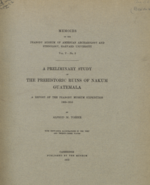
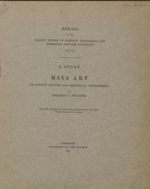
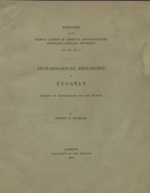
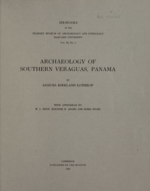
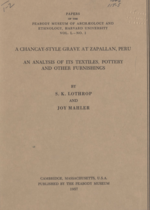
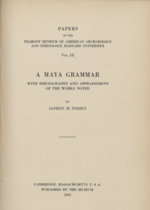
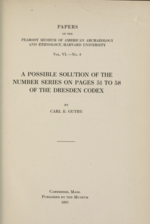
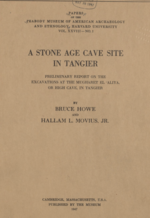

The 1968 excavation of the Neville Site in Manchester, New Hampshire, was a major event in the archaeological history of New England. Analysis of the site extended the known duration of continuous occupation in the region by some 3,000 years and demonstrated early connections between the New England area and the Southeast. The Neville Site was first occupied nearly 8,000 years ago, when the Eastern coastal plain from North Carolina to New Hampshire was essentially a single cultural province. Current excavations in Manchester have reinvigorated interest in the archaeology of New Hampshire and created a demand for this facsimile edition of the original 1976 publication.
The Peabody Museum also publishes Anthropological Literature, a research database that indexes over 660 journals in multiple languages -- a highly recommended research tool.